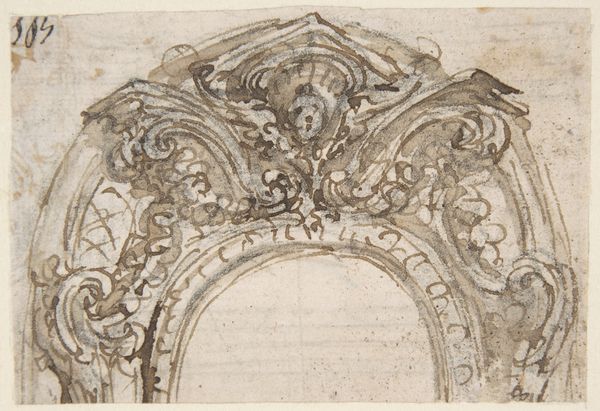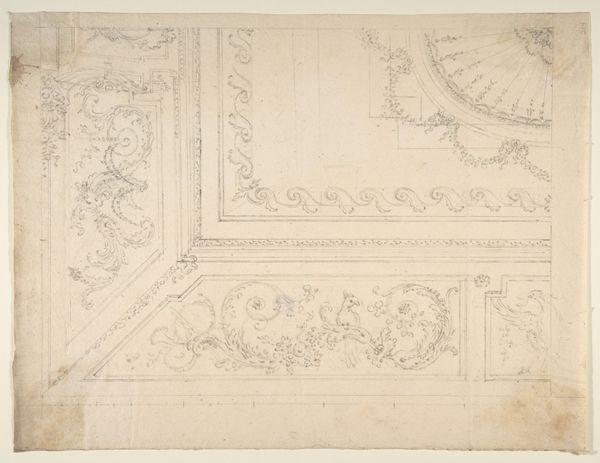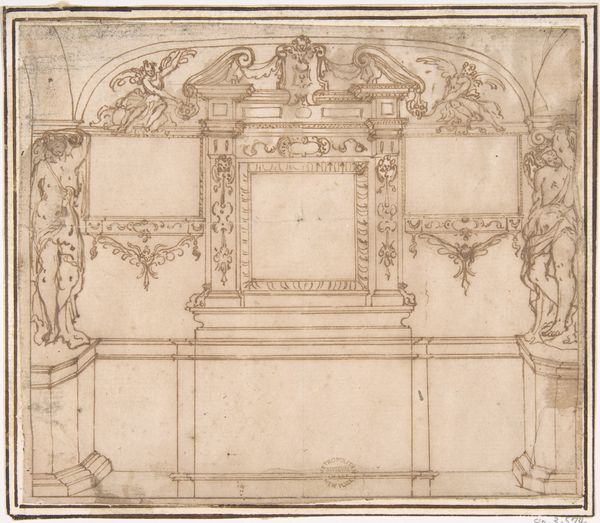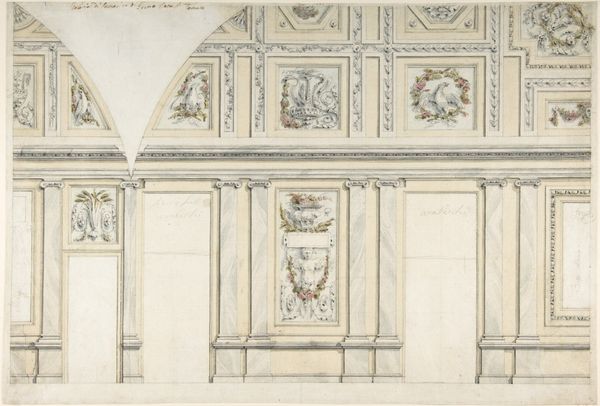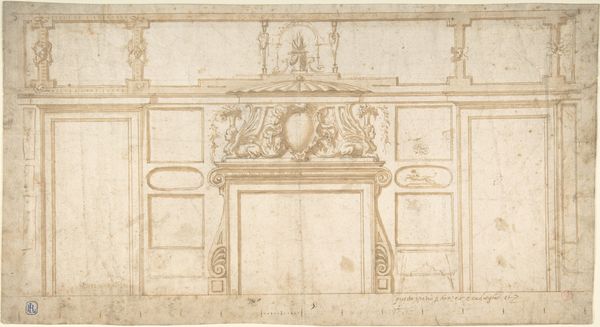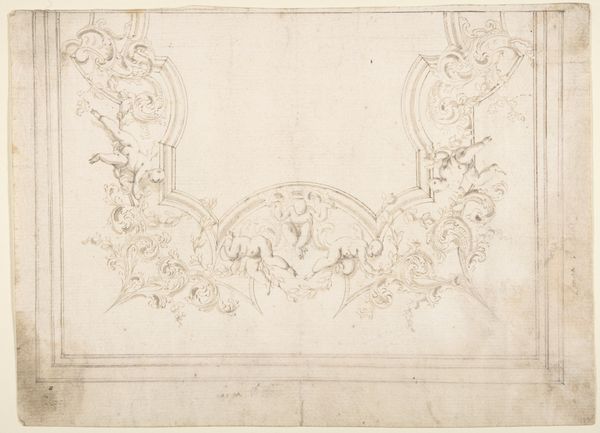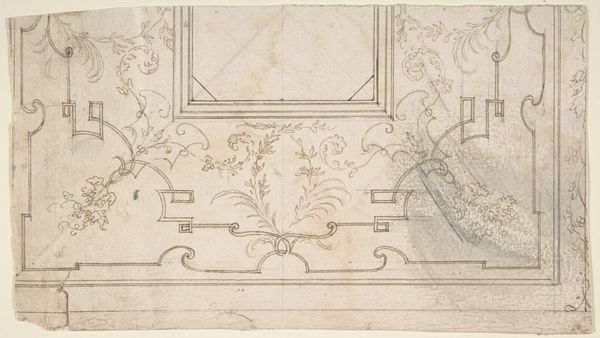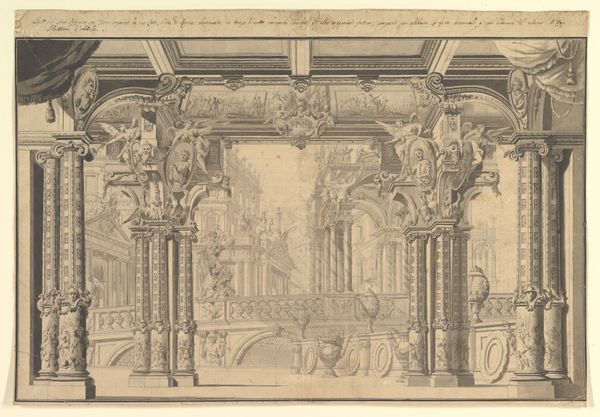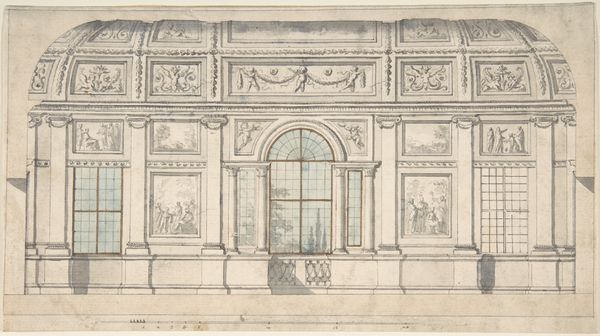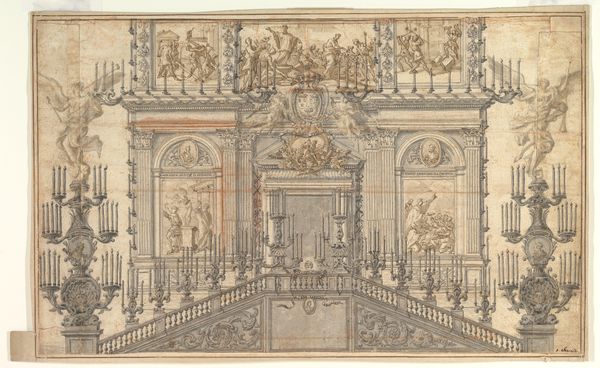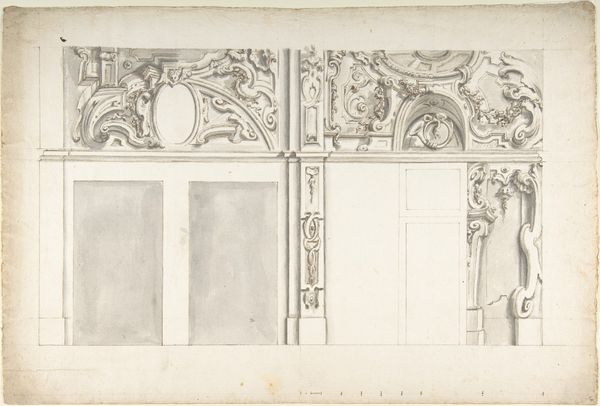
Design for the Upper Half of a Wall Elevation with a Semicircular Window 1652 - 1725
0:00
0:00
drawing, print, architecture
#
drawing
# print
#
form
#
11_renaissance
#
traditional architecture
#
geometric
#
line
#
italian-renaissance
#
architecture
Dimensions: sheet: 6 9/16 x 6 15/16 in. (16.6 x 17.7 cm)
Copyright: Public Domain
Editor: Here we have Giovanni Battista Foggini’s "Design for the Upper Half of a Wall Elevation with a Semicircular Window," dating back to sometime between 1652 and 1725. It's a drawing, a print, really focused on architectural form. What jumps out at me is how meticulously detailed it is, yet somehow feels quite dreamlike. What do you see in this piece? Curator: It sings of hidden geometry to me, whispers of long-forgotten ratios. I mean, look at how that arched window splits its light—like secrets unfurling! But for me it’s all Foggini inviting us into a very private dialogue between intellect and whimsy. Almost as if he knew, centuries on, you’d be musing on his intent. Does the precision seem almost playful, counterintuitively? Editor: Playful, yes! It’s like he's daring us to see the beauty in the blueprint. The flourishes around the window… they’re so elaborate! Do they tell us anything specific about the kind of building this design was intended for? Curator: I imagine this piece was designed with a Baroque spirit, an exuberant declaration, where even walls aren't immune to a bit of theater! And the building it calls to mind would feel as close as a dear friend, don't you think? That elaborate embellishment tells us something, doesn't it, of someone who wanted to be seen, to provoke something wonderful. I’m just captivated! Editor: I totally get what you mean! Looking at it now, it does feel less like a technical drawing and more like… a portrait of a building, infused with character. Thanks, that really opened my eyes. Curator: My pleasure. It's art’s wonderful trick, isn't it? Making stone breathe and ink reveal more than we ever imagined.
Comments
No comments
Be the first to comment and join the conversation on the ultimate creative platform.
